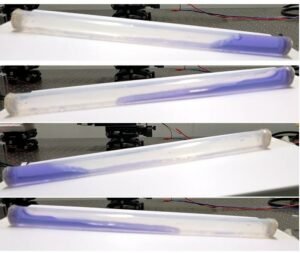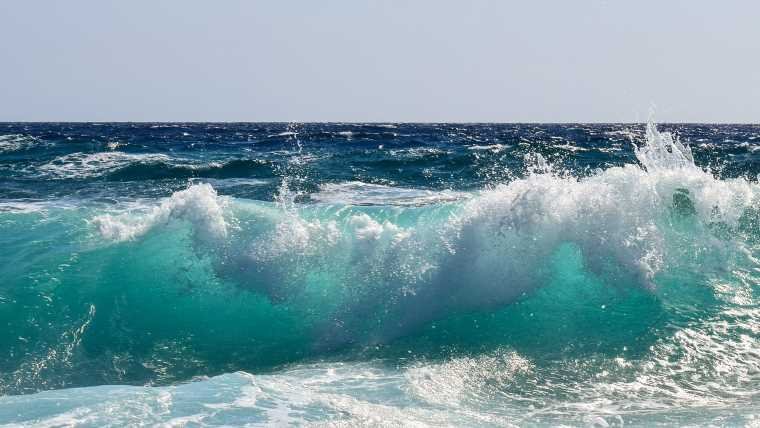Scientists have discovered a simple hack in the construction of so-called blue energy generators that dramatically increases the power they collect from the motion of waves.
Previous generations of blue energy generators have suffered from low efficiency, limiting their practical uses. This latest design hack, which simply repositions the electrode in the wave generator, hopes to change that equation, opening up numerous potential applications for this type of kinetic energy generation.
As the world attempts to meet increasing energy demands while also balancing the need for more sustainable power generation options, technologies like solar and wind power that tap into the environment’s natural energy production potential have continued to gain traction. Still, those power harvesting methods have limitations, making them unlikely to completely meet rising demands.
One increasingly popular approach involves collecting energy generated by friction using a technology known as a triboelectric nanogenerator (TENG). For example, a team of researchers created a prototype ‘rain panel’ equipped with a series of TENGs that collect energy from falling rain. Unfortunately, that invention has yet to make its way to everyday consumers.
Now, scientists say they have taken a 20th-century idea of capturing the energy of ocean waves and added a simple engineering hack that increases their energy output high enough that they could be used for a number of practical power harvesting applications.
Known as a liquid-solid TENG, the tube-shaped device is filled with water and placed on the surface of the ocean. When the waves move, the water inside sloshes back and forth. That motion causes friction on an electrode inside the tube, which in turn creates usable electrical energy that can be collected.
The team proposed improving the device by relocating the TENG from the center of the tube, where it is traditionally placed, to the extreme end. The hope was that the increased kinetic energy from the additional distance traveled by the liquid inside the tube would increase the energy generated by the TENG.


To test their hypothesis, Guozhang Dai, Kai Yin, Junliang Yan, and colleagues decided to construct two of their own liquid-solid TENGS. Each was 16 inches in length and then fitted with a copper foil electrode. The first had its electrode placed in the center location like traditional TENGs, while the second had the electrode placed at the end.
Next, the tubes were filled one-quarter of the way with water and then sealed at the ends. To measure their energy output, each TENG had a wire connected to the electrode and then fed to an external circuit.
Each of the two TENGs was placed on a tabletop rocker device that moved back and forth to simulate the motion of ocean waves. During this process, the electrical output of each generator was monitored externally. As hoped, the simple hack resulted in a dramatic increase in power.
As the press release announcing the blue energy generator hack explains, “Compared to the conventional design, the researchers found that the optimized design increased the device’s conversion of mechanical energy to electrical current 2.4 times.”
The paper outlining the blue energy generator’s improvements, which is published in the journal ACS Energy Letters, goes into more detail, explaining that “through the space volume effect, the open-circuit voltage, short-circuit current, and transfer charge of (TENG) can be improved by 3.5 times, 2.3 times, and 2 times, respectively.”
To further demonstrate the improved output of their ‘hacked’ TENG, the researchers also connected it to a series of 35 LEDs and watched them all flash on and off as the fluid inside the generator sloshed back and forth. The researchers note that this demonstration not only shows its power generation capabilities but also one possible application.
“The (TENG) not only boasts high output performance for harvesting low-frequency and high-entropy motion energy, but its output displacement current can also serve as a compact signal generator for underwater wireless communication.”
The researchers did not provide a timeline or clear path for when we might see these types of improved wave power generators in commercial use. However, they did sound hopeful, noting that “these demonstrations lay the foundation for larger-scale blue-energy harvesting from ocean waves.”
Christopher Plain is a Science Fiction and Fantasy novelist and Head Science Writer at The Debrief. Follow and connect with him on X, learn about his books at plainfiction.com, or email him directly at christopher@thedebrief.org.

